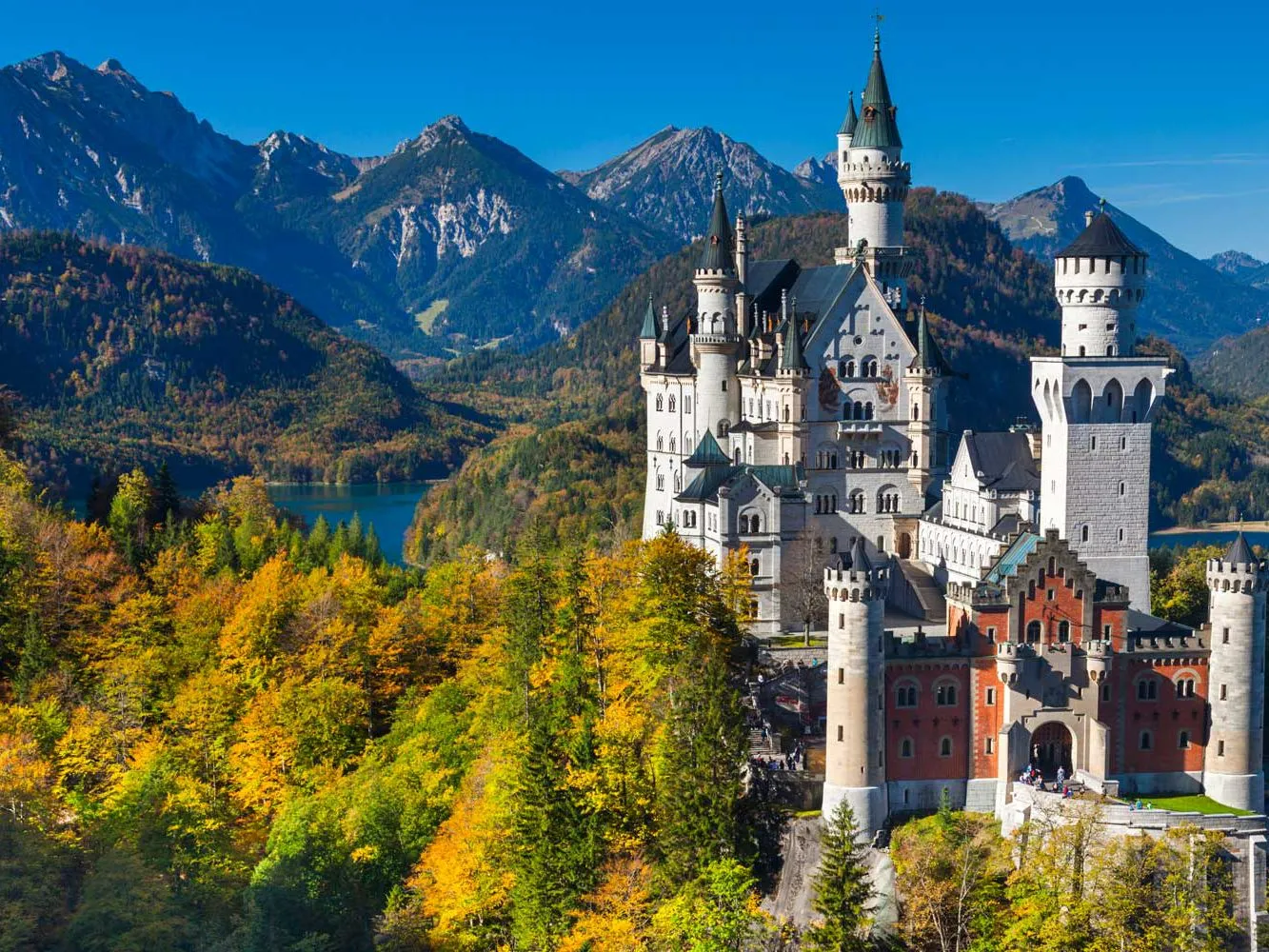The Landscape of Neuschwanstein - Bavaria’s Nature as Sacred Architecture
Explore the landscape around Neuschwanstein Castle — how Bavaria’s alpine wilderness became part of King Ludwig II’s sacred romantic vision.

Neuschwanstein’s magic begins not within its walls, but in its setting — a kingdom of forested peaks, crystal lakes, and rolling clouds that seem composed for symphony and silence.
🏞️ The Chosen Mountain
Ludwig II chose a precipitous ridge above the Pöllat Gorge, facing the lakes Alpsee and Schwansee, and the nearby Hohenschwangau Castle of his childhood.
Here, the mountain itself became a natural throne — a pedestal for his dream.
Every path, window, and balcony was oriented to frame a specific vista:
- Eastward, the sunrise over misty lakes.
- Westward, the sun setting beyond the Allgäu plains.
- Southward, the eternal guardianship of the Alps.
“The landscape must be part of the architecture,” Ludwig wrote — and Neuschwanstein fulfills that vision perfectly.
🌲 Nature as Sanctuary
To Ludwig, the Bavarian Alps were more than scenery — they were a cathedral of God’s creation.
He walked the forests alone, finding in their solitude the same transcendence he sought in music.
Neuschwanstein thus became a dialogue between stone and sky — where the human longing for beauty found its echo in nature’s majesty.
🌫️ Light, Weather, and Atmosphere
The castle’s limestone façade transforms with the weather:
- In morning mist, it floats like a phantom.
- In snow, it glows with ethereal purity.
- In evening sun, it burns golden against the dark pine slopes.
This constant metamorphosis gives Neuschwanstein an almost living quality — a dream that breathes with the mountain.
🌌 A Romantic Landscape Eternal
The setting of Neuschwanstein captures the essence of German Romanticism — the fusion of nature, art, and soul.
It is not simply a view, but a vision: the world as it might appear in a poet’s final dream.
The landscape of Neuschwanstein is the stage on which eternity performs.
About the Author

Cultural Geographer
A travel enthusiast and history lover, I created this guide to help visitors experience the magic and stories behind Neuschwanstein Castle.
Tags
Comments (0)
Loading comments...